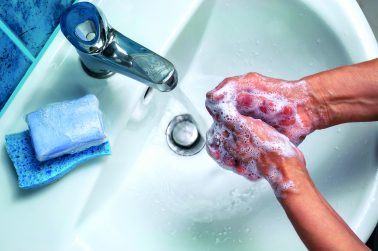Hand hygiene: finding facts and debunking myths

Handwashing and overall hand hygiene are crucial in preventing the spread of pathogens – those disease-causing bacteria and viruses. Almost everyone grew up with admonishments of washing hands before meals and after bathroom visits.
The global COVID-19 pandemic, however, cast a new light on handwashing and general hand hygiene practices. The world suddenly wondered about things such as the efficacy of sanitisers, the proper time it takes to get hands clean, and what to touch and not to touch.
These questions gave rise to theories, speculations, conspiracies and some truths. This article explores the facts and myths surrounding hand hygiene so that you can make informed choices about how to keep your hands clean.
The facts about hand hygiene
Handwashing is the most important step in hand hygiene. People should regard soap and water as the first line of defence when it comes to infection control.
- Washing hands with soap and water can decrease deaths related to diarrhoea by 50%.
- Implementing proper and regular handwashing routines can prevent up to a million deaths per year.
- Contaminated hands spread foodborne diseases. The simple practice of handwashing reduces this risk significantly.
- Handwashing can reduce the spread of respiratory infections by 16%.
- The average human being is exposed to 300 different surfaces every 30 minutes. These surfaces harbour approximately 840,000 germs.
- A meagre average of 5% of us apply correct handwashing techniques.
- The average handwashing time amounts to six seconds, and only 33% of people use soap when washing hands.
- About 80% of infectious diseases are passed on through touch. This can be from touching things or people.
- Damp hands spread germs much faster than dry hands.
- Elevator buttons have 22% more germs than toilet seats.
- The hotspots for bacteria on the hands are under the nails and on the fingertips – the areas most neglected when washing hands.
- Warning and reminder signs increase the practice of handwashing.
- Traces of faecal matter are present on cell phones, credit cards and banknotes.
- People are reluctant to wash their hands in dirty sinks and more likely to wash hands in the morning than in the evening.
Considering these facts, the importance of hand hygiene cannot be overstated. Creating awareness about how, when and where to wash hands should be continual.
Debunking the myths
Like all crises, the prevalence of the coronavirus has given rise to certain myths on general hand hygiene and hand hygiene practices. Unfounded practices increase the risk of infection. Here are some prominent myths on handwashing and hand hygiene:
MYTH – Wearing gloves is better than washing hands
The bacteria accumulating on gloves spreads to your hands through small tears and when being removed. It is better to wash hands than risk a punctured glove. Gloves can create an unfounded sense of security that makes the wearer more reckless and less inclined to follow regular handwashing routines.
MYTH – Hot water kills germs
Hot water alone cannot kill viruses. However, hot water combined with soap can. It is recommended that water is between 35°C and 45°C, not scalding, when washing hands.
MYTH – hand dryers are best for drying hands
Bacteria can breed inside hand dryers if not maintained properly. Disposable paper towels remain best for drying hands.
MYTH – Sanitisers can replace handwashing
Nothing replaces handwashing. Use sanitisers as a backup when you cannot wash your hands. Also, remember that sanitisers do not work well on dirty and greasy hands.
MYTH – It does not matter for how long hands are washed
The NHS recommends a handwashing time of at least 20 seconds. This is how long it takes to kill pathogens present on the hands.
